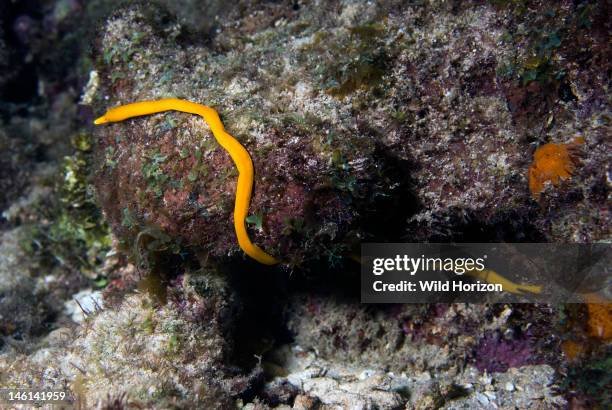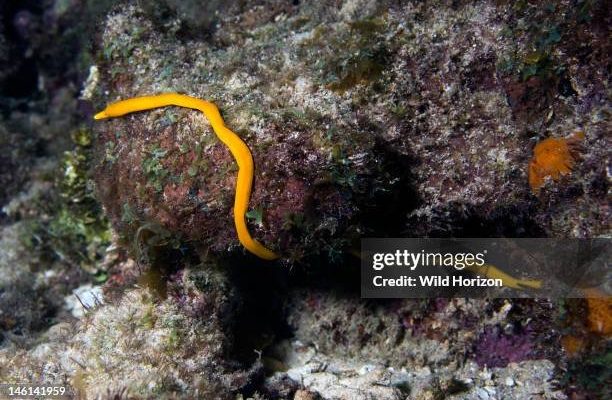
Ribbon worms, also called nemerteans, are soft-bodied invertebrates that can be found weaving through the intricate ecosystems of coral reefs. Much like a magician’s ribbon that unfurls in a dazzling display, these worms come in a variety of colors and sizes, some even capable of stretching up to 30 meters long! Their unique anatomy and behaviors make them crucial players in these underwater environments. So, why should we care about ribbon worms? For starters, they help maintain the health of coral reef systems, which are essential to marine biodiversity. Let’s explore this topic further.
What Are Ribbon Worms?
Ribbon worms are part of the phylum Nemertea, and they’re known for their elongated bodies that can range from just a few centimeters to an astonishing 30 meters long! Imagine a garden hose that can change its length and color; that’s similar to how ribbon worms operate. They’re usually slim, flexible, and colorful, often found hiding among rocks or creeping through the sandy ocean floor.
These worms have a unique anatomy that sets them apart from other marine life. They possess a proboscis, a retractable feeding organ that they can shoot out to snatch prey. It’s almost like having a built-in fishing rod! This proboscis can be a significant advantage when hunting smaller marine creatures like crustaceans or small fish. This ability helps to keep the population in balance, which is vital for the health of the reef ecosystem.
You might be wondering how many different species are out there. Well, there are over a thousand species of ribbon worms, each adapted to different environments and lifestyles. They can thrive in various habitats, from shallow coral reefs to deeper ocean floors, showcasing their adaptability to a wide range of conditions.
The Role of Ribbon Worms in Coral Reef Ecosystems
Ribbon worms play several crucial roles within coral reef ecosystems. They are important scavengers, consuming dead organic matter and helping to break it down. Think of them as nature’s clean-up crew! By recycling nutrients, ribbon worms contribute to the overall health of their environment. This process aids coral growth, making them key players in the vibrant reef systems.
Additionally, these worms are part of the food web. Ribbon worms serve as a food source for various marine animals, including fish and sea turtles. Without them, the balance in the ecosystem could be disrupted. Just like the way a chain reaction occurs in a line of dominos, the absence of ribbon worms could lead to a decline in fish populations, which would then affect larger predators that rely on those fish for sustenance.
Another interesting aspect of ribbon worms is their unique reproductive strategies. Some species are hermaphroditic, meaning they have both male and female reproductive organs. This allows them to reproduce more easily, especially in environments where finding a mate can be challenging. The process of reproduction involves a fascinating display of colors and movements that can be quite a spectacle to observe.
How Do Ribbon Worms Hunt?
Ribbon worms have developed some pretty clever hunting strategies. Using their proboscis, they can capture prey with remarkable speed and precision. When they find a potential meal, they can extend this organ and quickly ensnare their target. Once caught, the worm can either consume the prey directly or inject it with digestive enzymes to break it down before ingestion.
This hunting technique is not just impressive; it’s also essential for regulating the populations of small animals on the reef. By controlling these populations, ribbon worms help maintain a healthy balance in the ecosystem. If prey species were to multiply out of control, they could lead to overgrazing of corals and other marine plants.
Interestingly, some ribbon worms have a fascinating defense mechanism as well. When threatened, they can produce a sticky secretion that helps them escape predators. It’s a handy way to slip away from a tricky situation, kind of like someone being able to slip out of their clothes to evade capture. This adaptability is a testament to their resilience in the face of various threats.
Challenges Facing Ribbon Worms
Unfortunately, ribbon worms and the coral reef systems they inhabit face numerous challenges in today’s world. Climate change is a significant concern. Rising ocean temperatures can lead to coral bleaching, affecting the entire reef ecosystem. Since ribbon worms depend on healthy coral for food and habitat, their existence is threatened as well.
Pollution is another major issue. Runoff from land, containing pesticides and industrial waste, can harm ribbon worms and their environments. These chemicals can disrupt their reproductive cycles and reduce their populations, further destabilizing the reef ecosystem. It’s a harsh reality that these tiny creatures often bear the brunt of larger-scale human activities.
Additionally, habitat destruction due to urban development and unsustainable fishing practices can impact ribbon worms. As coral reefs are damaged or destroyed, the intricate web of life that depends on them—including ribbon worms—faces dire consequences. This underlines the importance of conservation efforts to protect these valuable ecosystems.
Conservation and the Future of Ribbon Worms
Conservation is key to ensuring that ribbon worms and their coral reef habitats thrive for future generations. Marine protected areas (MPAs) have been established in various locations to help safeguard these fragile ecosystems. By restricting harmful activities like overfishing and pollution, we can give ribbon worms and other marine life the chance to flourish.
Education and awareness are equally important. By informing communities about the significance of coral reefs and their inhabitants—like ribbon worms—we can foster a sense of responsibility. Individuals can take steps to reduce their own impact on the oceans, such as using fewer plastics, supporting sustainable seafood, and participating in local cleanup efforts.
Innovation in marine research also plays a role in conservation. Scientists are continually studying ribbon worms and other marine creatures to better understand their needs and behaviors. This knowledge can lead to targeted conservation strategies that help preserve these vital ecosystems.
In summary, ribbon worms may not be the most glamorous or well-known inhabitants of coral reef systems, but they are undoubtedly important. From their unique hunting strategies to their role in maintaining ecological balance, these creatures contribute significantly to the health of marine environments. As we face increasing challenges like climate change and pollution, it’s crucial to recognize the value of ribbon worms and the rich biodiversity of coral reefs.
The next time you think about coral reefs, remember that every creature, no matter how small, plays a part in this intricate web of life. Protecting these ecosystems means protecting the ribbon worms, the corals, and all the life that depends on them. So let’s continue to learn, advocate, and act—because every bit helps!

